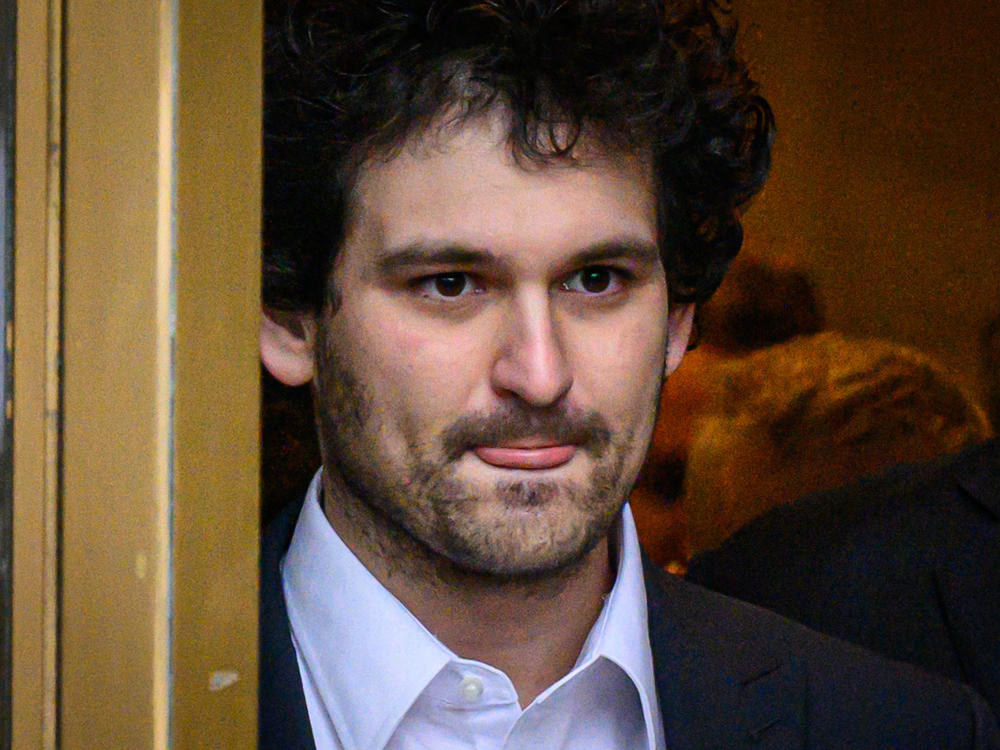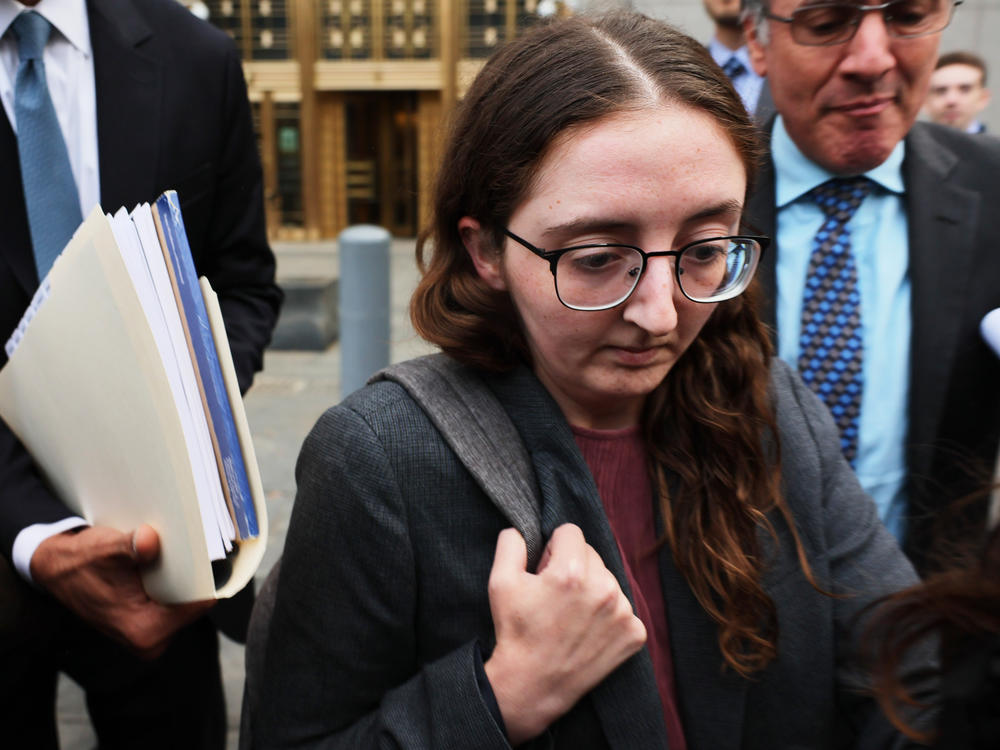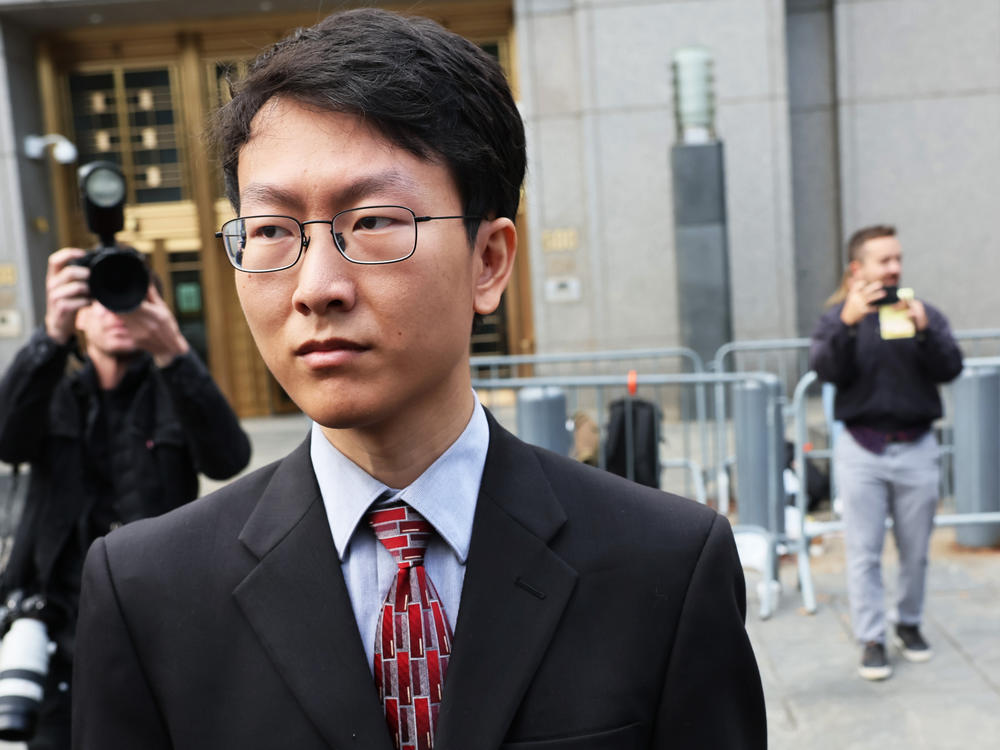Section Branding
Header Content
Criminal mastermind or hapless dude? A look into Sam Bankman-Fried's trial so far
Primary Content
The U.S. government says disgraced cryptocurrency mogul Sam Bankman-Fried committed one of the largest financial frauds in history. His defense lawyers, however, argue he was just a young guy who got in over his head.
Two weeks into the high-profile criminal trial of the former CEO of cryptocurrency exchange FTX, jurors have already heard opening arguments as well as testimony from the prosecution's star witness, Caroline Ellison, a former top executive in Bankman-Fried's crypto empire and his ex-girlfriend.
Here are five big takeaways from the trial so far.
Painting Bankman-Fried as a criminal mastermind
Prosecutors have charged Bankman-Fried with seven criminal counts, including defrauding FTX customers and investors.
They argue he funneled FTX customer money into a separate investment firm he controlled — Alameda Research — and used billions of dollars to pay down debts, invest in risky startup companies and finance a luxury lifestyle.
If convicted of all charges, Bankman-Fried could spend the rest of his life in prison.
Central to the government's argument is that Bankman-Fried controlled it all, and the government has secured the cooperation of key members of his inner circle at FTX and Alameda Research.
The jury has already started to hear from them.
Gary Wang, who co-founded both FTX and Alameda Research, said Bankman-Fried directed him to change a few lines of computer code so that funds from FTX customers could be steered to Alameda without their knowledge.
Wang, like other witnesses for the prosecution, said everyone followed Bankman-Fried's instructions.
Prosecutors also introduced documentary evidence, including Slack messages and several audio clips of an all-hands meeting during Alameda Research's final days, which they say support their claim that Bankman-Fried was the one running the show at both companies.
A star witness delivers explosive testimony
Among the prosecution's witnesses, one towers above the rest in her importance to the case: Caroline Ellison, Bankman-Fried's on-again, off-again girlfriend and former head of Alameda Research.
During three days of testimony that got tearful at times, Ellison — like Wang — said it was Bankman-Fried who called the shots.
"He directed me to commit these crimes," she told the court.
Ellison said he asked her to draw on FTX customer funds to pay down Alameda Research's debts, and he told her to manipulate financial documents in "dishonest" ways to mislead investors and the firm's lenders.
Ellison also alleged Bankman-Fried was manipulative. In excerpts from her diary, which the government entered into evidence, Ellison wrote about her personal and professional frustrations in dealing with the former FTX CEO.
At one point, Bankman-Fried criticized her for failing to follow his investment advice, and in a memo he circulated, Bankman-Fried suggested Ellison was a weak leader.
Ellison also detailed how much effort Bankman-Fried put into cultivating a certain persona, seeking to capitalize on what became his signature look — unkempt hair, along with a T-shirt and shorts.
That calculated nonchalance extended beyond the way he dressed, she added.
According to Ellison, when FTX moved its headquarters to the Bahamas, they both initially had luxury cars to drive. But Bankman-Fried didn't like the optics, and he soon switched cars.
"He said he thought it was better for his image to be driving a Toyota Corolla," she said.
Ellison herself started driving a Honda Civic.
But the defense argues Bankman-Fried was overwhelmed
From the outset, Bankman-Fried's attorneys have tried to suggest their client is an entrepreneurial brainiac who couldn't keep up with how quickly his crypto businesses were growing.
On numerous occasions, they have noted how fast FTX, which Bankman-Fried started in 2019, grew into a multibillion-dollar company that courted celebrity investors and promoters like star quarterback Tom Brady.
They also have alleged it was difficult for both firms to hire adequate staff — especially accountants.
Bankman-Fried's legal team has emphasized how much trust the defendant put in deputies like Ellison, especially as he became more high profile and traveled the world meeting with lawmakers, regulators and wealthy investors.
They have said their client was constantly being pulled in different directions, and they got Ellison to admit that, for several months, she and her staff had no contact with Bankman-Fried whatsoever.
Bankman-Fried's lawyers have problems of their own
Notably, Bankman-Fried's lawyers keep getting admonished by Judge Lewis Kaplan, who is overseeing the trial.
The judge seemed unsympathetic to almost every motion that Bankman-Fried's defense team filed. Several weeks before the trial, Kaplan revoked Bankman-Fried's bail and sent the defendant to a federal jail in Brooklyn to await trial.
So far, the judge has overruled many of the objections from Bankman-Fried's lawyers, and he also has become noticeably impatient with their eagerness to retread ground covered during direct examinations.
Not only that, but Kaplan has also criticized the lawyers for repeatedly requesting "sidebars" — meetings with him and the prosecution in the courtroom, out of earshot of the jury.
A question looms as the trial continues
Will Bankman-Fried testify? That's the big question.
Before the trial started, Kaplan addressed Bankman-Fried directly to inform him that he has the right to take the stand in his own defense, even if his lawyers advise him not to do that.
That would be risky, according to lawyer Joshua Naftalis, who used to be a federal prosecutor.
"In the average white-collar case, most defendants don't testify," he says.
But Naftalis adds that it may make sense for Bankman-Fried, if he's able to convince jurors that he truly had no intent to commit any crimes.
Bankman-Fried has previously shown himself to be inclined to talk.
After he was placed under house arrest at his parents' home in Northern California, Bankman-Fried mounted a defense in the court of public opinion.
He started an email newsletter on Substack; posted on X, formerly known as Twitter; and sat for countless interviews with reporters. When prosecutors asked for the judge to throw out his bail agreement, they noted that Bankman-Fried had more than 1,000 phone calls with journalists.
Copyright 2023 NPR. To see more, visit https://www.npr.org.



